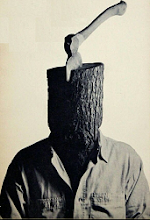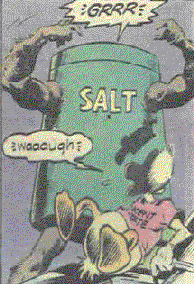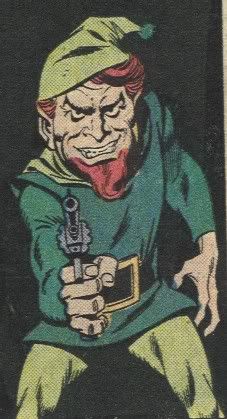This’ll Generate Some Hate Mail
First, an admission: I don’t like J.R.R. Tolkien. I enjoyed The Hobbit as a slight entertainment, but the Lord of the Rings puts me right to sleep. I've tried to read The Fellowship of the Ring a few times, and end up losing the will to live at page 150 or so. Richly-appointed fantasy worlds and elaborate backstories just don’t interest me as much as a well-crafted plot or interesting characters. Worse, his prose style makes me cringe.
With that out of the way, I do admit that there’s something appealing about delving into the backstory of his fantasy world. It’s like examining the H-O scale trainset of an obsessive old crank. While I have no interest in sitting in his basement to watch the train go round-and-round for hours, it’s pretty cool to lean in and see how he painted the wee trees and houses.
When the movies came out, I got interested in the world and poked around the web to learn the backstory of Middle Earth. As you might expect, it didn’t take long to hit giant troves of the stuff. I learned about Balrogs and Numenor and Dunlendings and whatall.
Through the thousands of years of history of Tolkien’s fictional world, one powerful motif seems to underline it all: “mommy, mommy, please don’t go.”
Tolkien split the history of Middle Earth into “years” and “ages.” At the end of each era, the most powerful beings in the world at that time depart, leaving the world progressively more barren of magic and the touch of the divine. This happens a couple of times. First the demigods leave, then the angels, and in the end of the Lord of the Rings, the elves pack up and go. Whoever’s on top of the “mystical pecking order” gets up and leaves.
Granted, the motif of decay from a golden age is a common one in mythology. Beyond the Abrahamic tradition of the fall from Eden, there’s the Hindu and Buddhist idea of the cyclical rise and decline of the world (we’re on a downslide now, of course) and the traditional trope of Chinese historiography: relentless decay (“The Shang dynasty was pure, not like the corrupt T’ang court of today,” etc.).
What makes Tolkien’s mythology of perpetual decay different is the motif of abandonment. The world isn’t just sliding into the crapper, he says, we’re being left behind by the divine. The world grows filthier, and the uppermost beings of the world choose to leave it, and us. As time advances, the world of the spirit moves farther and farther away from the world of matter.
The dimestore Freud in me links this to his upbringing. The American in me, brought up to believe that history is the story of progress rather than decay, finds it silly.
I was never much for Lost Golden Ages and the Irreversible Decline of Man.
With that out of the way, I do admit that there’s something appealing about delving into the backstory of his fantasy world. It’s like examining the H-O scale trainset of an obsessive old crank. While I have no interest in sitting in his basement to watch the train go round-and-round for hours, it’s pretty cool to lean in and see how he painted the wee trees and houses.
When the movies came out, I got interested in the world and poked around the web to learn the backstory of Middle Earth. As you might expect, it didn’t take long to hit giant troves of the stuff. I learned about Balrogs and Numenor and Dunlendings and whatall.
Through the thousands of years of history of Tolkien’s fictional world, one powerful motif seems to underline it all: “mommy, mommy, please don’t go.”
Tolkien split the history of Middle Earth into “years” and “ages.” At the end of each era, the most powerful beings in the world at that time depart, leaving the world progressively more barren of magic and the touch of the divine. This happens a couple of times. First the demigods leave, then the angels, and in the end of the Lord of the Rings, the elves pack up and go. Whoever’s on top of the “mystical pecking order” gets up and leaves.
Granted, the motif of decay from a golden age is a common one in mythology. Beyond the Abrahamic tradition of the fall from Eden, there’s the Hindu and Buddhist idea of the cyclical rise and decline of the world (we’re on a downslide now, of course) and the traditional trope of Chinese historiography: relentless decay (“The Shang dynasty was pure, not like the corrupt T’ang court of today,” etc.).
What makes Tolkien’s mythology of perpetual decay different is the motif of abandonment. The world isn’t just sliding into the crapper, he says, we’re being left behind by the divine. The world grows filthier, and the uppermost beings of the world choose to leave it, and us. As time advances, the world of the spirit moves farther and farther away from the world of matter.
The dimestore Freud in me links this to his upbringing. The American in me, brought up to believe that history is the story of progress rather than decay, finds it silly.
I was never much for Lost Golden Ages and the Irreversible Decline of Man.





3 Comments:
Oh, you bastard! How can you say such evil things about the greatest work of literature EVER!!!!
Okay, now that that's out the way, interesting stuff. I don't agree with you that the overwrought prose drags you out of the story - I've read the damned thing more than once, and I'm currently reading it aloud to my daughter, so obviously I like it. I agree with your take on the mythology, though, but isn't that a better theme than, say, God swooping in at the last minute and rescuing everyone? Tolkien's heroes are noble because they must overcome the loss of God. The worst part of the Silmarillion was the Last Battle, when the gods returned to destroy Thangorodrim. Up until then, the struggle of the Elves, who explicitly rejected the gods, had been fascinating.
You also didn't mention the inherent racism of The Lord of the Rings. We've reached the battle scenes in the last book, and it's interesting that fighting for the good guys (the "West") are Rohan, with their blond, tall horsemen, and the men of Gondor, who are taller and prettier than anyone else. Fighting for the bad guys (the "East," which is also associated with black, of course) are the Haradrim and the Southrons, who are swarthy and dusky and mysterious, as well as people who are obviously meant to be Africans. The black/white motif doesn't bother me as much as the obvious parallels with the White Man's Burden thing. Not an original assessment, I know, but worth pointing out.
By Greg, at 7:15 PM
Greg, at 7:15 PM
Tolkien was a Victorian-era Oxford don. Had he not been a racist, at least a subtle one, I would have been shocked. Honestly, I didn't have much interest in that angle so much as the abandonment motif.
There are all kinds of themes he could have employed, though. Neither abandonment nor deus-ex-machina were necessary. The Norse sagas that Tolkien used for his inspiration regarded the gods as unknowable bastards who jerked people around for reasons of their own. That makes for a compelling read.
One of the key source texts for Lord of the Rings was the Volsung Saga. The recasting of the broken sword, the ring of power, it's there. Now that's a rollicking read. It lacks the Victorian propriety and academic temperament of LOTR, and swaps out the crypto-Christianity for some good ol' fashioned honest down-home paganism. Much ass does it kick.
By Harvey Jerkwater, at 10:21 PM
Harvey Jerkwater, at 10:21 PM
I think rather than abandonment issues, the key to Tolkein is to remember he was part of the Lost Generation, someone who fought in World War I. That experience tended to destroy the ability of anyone who participated in it to believe in progress. Contrast the sunny optimism of the pre-WWI period to the onslaught of depressed literature and the general anomie of his generation after the war.
Ultimately, it inclined him to create a mythology of the gradual degeneration of the world and the struggle to save what good could be preserved.
By Anonymous, at 3:35 AM
Anonymous, at 3:35 AM
Post a Comment
<< Home